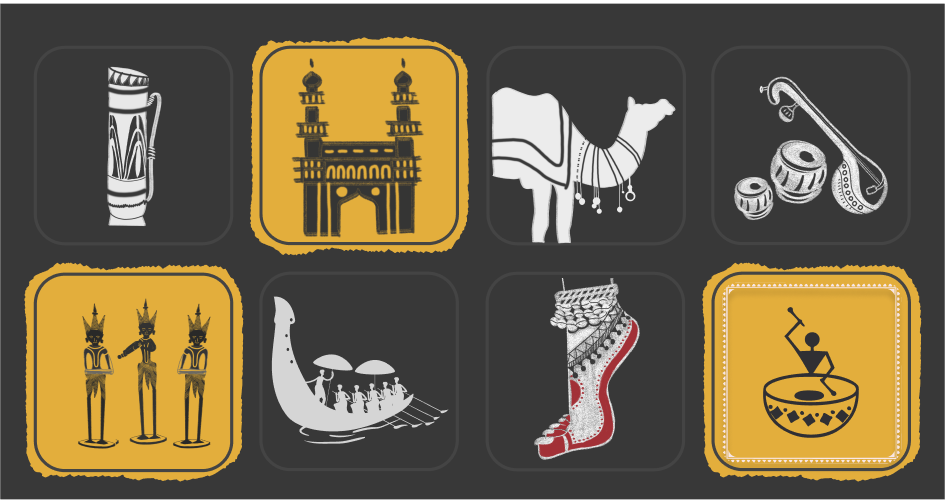Brihadeeswara Temple: A Confluence of Art, Culture, and Devotion
The Brihadishwara Temple, also called Rajarajeswaram, is a grand Shaivite Hindu temple situated on the southern bank of the Cauvery River in Thanjavur, Tamil Nadu, India. Often known as the Thanjavur Big Temple or Peruvudaiyar Kovil, this remarkable structure commissioned by the Chola emperor Rajaraja I between 1003 and 1010 CE, stands as one of the largest Hindu temples and a prime example of Tamil architecture, earning the title of Dakshina Meru. Today, it is recognized as a UNESCO World Heritage Site and forms part of the "Great Living Chola Temples."
Originally surrounded by a moat, this 11th-century temple complex comprised a grand gopura, the main shrine with its towering vimana, numerous inscriptions, vibrant frescoes, and sculptures predominantly dedicated to Shaivism, with nods to Vaishnavism and Shaktism as well. Over time, the temple suffered damage, and some of its artwork is now lost. Subsequent centuries saw the addition of mandapams and monuments, while fortified walls were erected around the temple complex in the 16th century.
Crafted from granite, the vimana tower atop the shrine stands as one of South India's tallest. The temple boasts a sprawling colonnaded prakara and houses one of India's largest shiva lingas. Renowned for its exquisite sculptures, the temple complex also holds shrines dedicated to various deities including Nandi, Parvati, Murugan, Ganesha, and others. Notably, it was here that the iconic brass Nataraja, depicting Shiva as the lord of dance, was commissioned in the 11th century. Today, the Peruvudaiyar Temple remains a highly popular tourist destination in Tamil Nadu.
Big Temple | Brihadeeswar Temple | Thanjai Periya Kovil
Rajaraja Chola, who commissioned the temple, originally named it Rajarajeshvaram, meaning "the temple of the god of Rajaraja." A later inscription in the Brihannayaki shrine refers to the temple's deity as Periya Udaiya Nayanar. Over time, this name evolved into the modern names Brihadeeswara and Peruvudaiyar Kovil.
A spectrum of Dravidian temple styles evolved from the fifth to the ninth century during the Chalukya era, as evidenced in Aihole, Badami, and Pattadakal, and later in the Pallava era, with monuments like those in Mamallapuram. From 850 to 1280, the Cholas emerged as the dominant dynasty. Initially, the early Chola period focused more on securing geopolitical boundaries than on architecture. However, by the tenth century, the Chola empire saw the emergence of architectural features like multifaceted columns with projecting square capitals. According to George Michell, this marked the beginning of the new Chola style. This South Indian architectural style reached its pinnacle with the Brihadeeswarar Temple, built between 1003 and 1010 by Chola king Rajaraja I.
The main temple and its gopurams date back to the early 11th century. Over the next 1,000 years, the temple underwent numerous additions, renovations, and repairs. Damage from raids and wars, especially between Muslim Sultans controlling Madurai and Hindu kings ruling Thanjavur, was repaired by subsequent Hindu dynasties. Renovations included restoring faded murals and adding new shrines. Notable additions, such as those of Kartikeya (Murugan), Parvati (Amman), and Nandi, were made during the 16th and 17th centuries, particularly in the Nayaka era. The Dakshinamurti shrine was also constructed later, and the Marathas of Thanjavur ensured the temple's maintenance.
The Peruvudaiyar temple, also known as Brihadeeswara Temple, follows axial and symmetrical geometry principles. Classified as a Perunkoil, it is a large temple built on an elevated platform. The rectangular temple complex, almost resembling two stacked squares, spans 240.79 meters (790 feet) from east to west and 121.92 meters (400 feet) from north to south. It features five main sections: the sanctum with its towering superstructure (Sri Vimana), the Nandi hall in front, the main community hall (mukhamandapam), the great gathering hall (mahamandapam), and the pavilion connecting the great hall with the sanctum (Antrala). In many instances, a Big Temple statue serves as a physical representation of this architectural grandeur, capturing the essence of the temple’s historical importance.
The temple complex includes a large pillared and covered veranda (prakara) in its spacious courtyard, with a perimeter of about 450 meters (1,480 feet) for circumambulation. Beyond this, two enclosure walls surround the temple, with the outer defensive wall added in 1777 by French colonial forces, turning the temple into an arsenal. The original main gopuram on the east end is barrel-vaulted and significantly smaller than the main temple's vimana. Additional structures, such as a northeast corner mandapa and further gopurams, were added over the centuries. The Pandya, Nayaka, Vijayanagara, and Maratha eras contributed more shrines and structures while respecting the original symmetry.
The Peruvudaiyar temple's scale and architectural innovation continued the South Indian temple tradition, incorporating grand elements. Chola architects developed new techniques for constructing large structures, particularly the towering 63.4-meter-high vimana. The temple faces east and was once surrounded by a water moat, now filled, with a fortified wall enclosing it. The main entrance gopuram, Keralantakan Tiruvasal, leads to the inner courtyard gopuram, Rajarajan Tiruvasal, both richly decorated with scenes from Hindu texts. Inside, the vast courtyard contains shrines aligned to cardinal directions, dedicated to Parvati, Murugan, Ganesha, Nandi, Varahi, Karuvur Deva, Chandeshvara, and Nataraja.
As a UNESCO World Heritage Site, the temple is under the care of the Archaeological Survey of India (ASI) for preservation and restoration. Recent efforts have included upgrading facilities for visitors and restoring ancient paintings. Sheila Sri Prakash led significant restoration work using innovative techniques like the de-stucco process for preserving old frescoes. The sanctum, located at the center of the temple, houses a large stone linga representing Shiva. Surrounding it are massive walls adorned with sculptures and pilasters, while the vimana, a 16-story tower, dominates the quadrangle.
The temple is home to a vast array of sculptures, including deities representing major Hindu traditions. The walls of the sanctum feature sculptures of Shiva in various forms, while the upper storey corridors display 81 of the 108 dance positions (karanas) from the Natya Shastra, significant for Bharatanatyam dance. The maha-mandapa and mukha-mandapa, connected by stairs, are square-plan structures adorned with artwork and guardian deities. Inscriptions throughout the temple provide detailed accounts of its personnel, wages, roles, and donations, showcasing its historical significance as a major center of charity.
The walls of the temple also feature Chola frescoes depicting themes of Shaivism, Hindu mythology, and court life, which were discovered in 1931 and restored using modern techniques. Some frescoes were damaged by soot over the centuries, but restoration efforts have ensured their preservation. In 2010, the temple celebrated its millennium with various cultural events, including a Bharatanatyam Yajna featuring 1,000 dancers. Commemorative stamps and coins were issued to mark the occasion, further highlighting the temple's enduring cultural and historical importance.
The Brihadishvara Temple continues to host an annual dance festival, typically in February, coinciding with Mahashivratri. Known as the Brahan Natyanjali festival, it attracts renowned classical Indian dancers and regional artists for ten days of performances. In recent years, the temple car was taken out for a trial run after being stationary for over a century, marking a significant moment in the temple's history. The temple has also inspired several works of historical fiction, including Kalki Krishnamurthy's famous novel "Ponniyin Selvan" and Balakumaran's "Udaiyar," both centered around the life of Rajaraja Chola and the temple's construction.
Located in the city of Thanjavur, about 350 kilometers (220 miles) southwest of Chennai, the temple is easily accessible via Indian Railways, Tamil Nadu bus services, and several National Highways. The nearest airport, Tiruchirappalli International Airport, is about 55 kilometers (34 miles) away. Though the temple is inland, it lies near the Kaveri River delta, offering access to the Bay of Bengal and the Indian Ocean. In the 11th century, the Tamil people constructed the first major irrigation network in the region, aiding agriculture and trade while supporting the growth of the urban center around the temple


